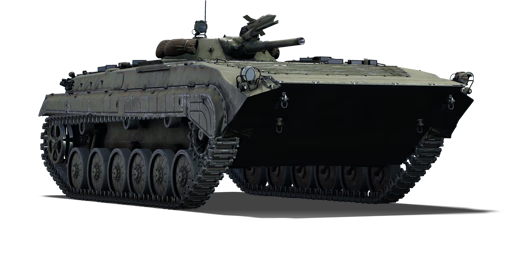The BMP-1 (Object 764) and its upgraded variant, the BMP-1P (Object 765Sp4), were the first IFV to be mass-produced and the first major modernization of this type of vehicle respectively. They were designed by the Soviet Union in the 1960s and 1970s to give mechanized infantry better mobility, firepower, and protection on the battlefield. The BMP-1 was widely exported and participated in various conflicts around the world, such as the Arab-Israeli wars, the Iran-Iraq war, the Afghan war, and the Chechen wars. The BMP-1P was introduced in the late 1970s and featured enhanced anti-tank capabilities, smoke grenade launchers and additional armour. The BMP-1P was also extensively used by Soviet and Warsaw Pact forces, as well as by some of their allies and adversaries.
It was introduced in Update 1.71 "New E.R.A.". The BMP-1 is more of a shoot-and-scoot type of vehicle as an exposed BMP is a dead BMP, so it avoids being a target at all costs. It can also use its mobility to find reasonable sniping spots (for ATGM) and generally only use the cannon if an enemy is close and unaware of its presence unless it's in arcade mode, where it can land artillery-like shots easily. With the BMP-1 being one of the more affected vehicles after getting a vehicle modification (BMP-1P) it comes with a trade-off: While the BMP-1 has a manual guided missile using WASD, it does come with a 6-second autoloader for its cannon which isn't affected by crew skill/damage/losses, while the BMP-1P comes with a far more sophisticated mouse-guided missile and smoke grenades, but loses its autoloading capability, leading to a potentially slower reload of the cannon, next to reload speed loss on crew skill/damage/losses.















